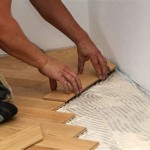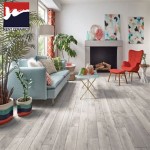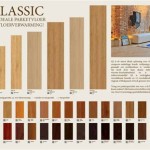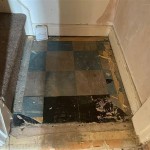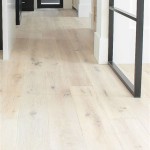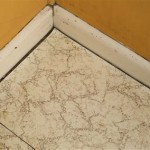Indus Concrete Laminate Flooring: A Comprehensive Guide
Indus Concrete Laminate Flooring represents a modern flooring solution that combines the aesthetic appeal of concrete with the practicality and affordability of laminate technology. This flooring option offers a visually striking alternative to traditional materials like polished concrete or tile, while providing numerous benefits in terms of installation, maintenance, and cost-effectiveness. This article provides a detailed overview of Indus Concrete Laminate Flooring, examining its composition, advantages, applications, installation process, and maintenance requirements.
Laminate flooring, in general, is a multi-layered synthetic flooring product fused together through a lamination process. It is designed to simulate the appearance of natural materials like wood, stone, or, in this case, concrete. Indus Concrete Laminate flooring specifically aims to replicate the industrial and contemporary look of concrete floors, offering a similar aesthetic without the challenges associated with real concrete, such as cracking, porosity, and extensive preparation.
Composition of Indus Concrete Laminate Flooring
Understanding the composition of Indus Concrete Laminate flooring is crucial to appreciating its performance characteristics. Typically, it consists of four primary layers, each serving a distinct purpose:
1. Wear Layer: This is the topmost layer, designed to resist scratches, stains, and fading. It is typically a clear, durable coating made of aluminum oxide or melamine resin. The wear layer's thickness is a critical factor in determining the flooring's durability and its suitability for different levels of foot traffic. A thicker wear layer provides greater protection against wear and tear, making it ideal for high-traffic areas such as hallways, living rooms, or commercial spaces.
2. Decorative Layer: Beneath the wear layer lies the decorative layer, a high-resolution photographic image that replicates the texture and color variations of concrete. This layer is responsible for the visual appeal of the flooring, and manufacturers employ advanced printing techniques to create realistic and convincing concrete patterns. The quality of the image and the printing process directly impacts the flooring's aesthetic realism.
3. Core Layer: The core layer provides the structural stability and impact resistance of the laminate flooring. It is typically made of high-density fiberboard (HDF) or medium-density fiberboard (MDF). HDF is denser and more resistant to moisture penetration than MDF, making it a preferable choice, particularly in areas prone to humidity or spills. The core layer's thickness also contributes to the flooring's overall durability and resistance to indentation from heavy furniture.
4. Backing Layer: The bottommost layer, also known as the balancing layer, provides stability and helps to prevent moisture from seeping into the flooring from the subfloor. This layer is usually made of melamine or a similar material that is resistant to moisture and warping. A well-designed backing layer is essential for maintaining the flooring's flatness and preventing issues such as cupping or buckling, especially in environments with fluctuating humidity levels.
Advantages of Indus Concrete Laminate Flooring
Indus Concrete Laminate offers a compelling combination of aesthetic appeal and practical advantages, making it a popular choice for residential and commercial applications. Some of the key benefits include:
1. Aesthetic Appeal: The ability to mimic the contemporary and industrial look of concrete is a major draw for many homeowners and designers. Concrete floors are often associated with modern, minimalist, and urban design styles. Indus Concrete Laminate allows individuals to achieve this aesthetic without the inherent drawbacks of real concrete, such as its coldness, hardness, and susceptibility to cracking. The variety of concrete patterns and finishes available in laminate form provides greater design flexibility than traditional concrete.
2. Cost-Effectiveness: Compared to polished concrete or concrete overlays, laminate flooring is significantly more affordable. The lower material costs, coupled with easier and faster installation, translate into substantial savings. Furthermore, the long lifespan of laminate flooring, when properly maintained, minimizes the need for frequent replacements, contributing to its long-term cost-effectiveness.
3. Ease of Installation: Laminate flooring is renowned for its relatively simple installation process. Most Indus Concrete Laminate flooring products utilize a click-lock or tongue-and-groove system, allowing for a floating floor installation. This means the flooring planks are connected to each other but not directly glued or nailed to the subfloor. This simplifies the installation process and reduces the likelihood of errors. In many cases, homeowners with basic DIY skills can install laminate flooring themselves, further reducing costs.
4. Durability and Maintenance: The durable wear layer of Indus Concrete Laminate flooring provides excellent resistance to scratches, stains, and fading. This makes it a suitable choice for households with pets or children. Regular cleaning typically involves sweeping, vacuuming, or damp mopping with a mild detergent. Unlike real concrete, laminate flooring does not require sealing or waxing, simplifying the maintenance process. The resistance to staining also ensures that the flooring retains its aesthetic appeal for years to come.
5. Comfort: While concrete is known for being cold and hard, laminate flooring offers a more comfortable surface underfoot. The core layer provides some cushioning, and the flooring can be installed over a suitable underlayment to enhance comfort and reduce noise transmission. This makes it a more pleasant option, especially in living areas and bedrooms.
Applications of Indus Concrete Laminate Flooring
The versatile nature of Indus Concrete Laminate flooring makes it suitable for a wide range of applications in both residential and commercial settings:
Residential Applications:
*Living Rooms: The aesthetic appeal and durability of concrete laminate make it an excellent choice for living rooms, creating a modern and stylish focal point.
*Bedrooms: While concrete may seem unconventional for bedrooms, the warmth and comfort of laminate provide a welcome contrast, creating a contemporary and inviting space.
*Kitchens: The water resistance of some laminate flooring products makes them suitable for kitchens, although care should be taken to address spills promptly.
*Basements: Laminate flooring can be a good option for basements, but it is essential to ensure that the subfloor is properly prepared and waterproofed to prevent moisture damage.
*Hallways and Entryways: The high-traffic resistance of laminate makes it ideal for hallways and entryways, where durability is paramount.
Commercial Applications:
*Retail Stores: The modern aesthetic and durability of concrete laminate are well-suited for retail environments, creating a stylish and easy-to-maintain flooring solution.
*Offices: Laminate flooring can be used in office spaces to create a contemporary and professional atmosphere.
*Restaurants and Cafes: In areas with moderate traffic and where spills are quickly addressed, concrete laminate can be a suitable flooring option for restaurants and cafes.
*Showrooms: The ability to create a clean and modern aesthetic makes concrete laminate a good choice for showrooms.
Installation Process for Indus Concrete Laminate Flooring
The installation of Indus Concrete Laminate flooring is a relatively straightforward process, especially for those familiar with basic DIY techniques. However, proper preparation and adherence to the manufacturer's instructions are crucial for achieving a successful and long-lasting installation. The general steps involved are:
1. Subfloor Preparation: The subfloor must be clean, level, and dry before installing laminate flooring. Any imperfections, such as cracks or unevenness, should be addressed. A self-leveling compound can be used to create a smooth and even surface. Ensuring the subfloor is adequately dry is critical to prevent moisture-related issues after installation.
2. Underlayment Installation: An underlayment is typically installed between the subfloor and the laminate flooring. The underlayment provides cushioning, reduces noise transmission, and acts as a moisture barrier. The type of underlayment chosen should be appropriate for the specific type of subfloor and the environment.
3. Acclimation: The laminate flooring planks should be acclimated to the room's temperature and humidity for at least 48 to 72 hours before installation. This allows the planks to expand or contract to their natural size, minimizing the risk of gaps or buckling after installation. The manufacturer's instructions will specify the recommended acclimation period and conditions.
4. Plank Installation: Starting in one corner of the room, the first row of planks is installed with the tongue facing the wall. Subsequent rows are then connected using the click-lock or tongue-and-groove system. It is important to maintain a consistent expansion gap around the perimeter of the room to allow for the natural expansion and contraction of the flooring. Spacers can be used to ensure a consistent gap.
5. Cutting and Fitting: In some areas, it may be necessary to cut the planks to fit around obstacles such as pipes or door frames. A saw or laminate cutter can be used for this purpose. Accurate measurements and careful cutting are essential for achieving a professional-looking finish.
6. Finishing Touches: Once the flooring is installed, baseboards or quarter-round molding are installed to cover the expansion gap and provide a finished look. Transition strips are used to connect the laminate flooring to other types of flooring.
Maintenance of Indus Concrete Laminate Flooring
Maintaining Indus Concrete Laminate flooring is relatively simple and requires minimal effort. Regular cleaning and preventative measures can help to prolong the flooring's lifespan and preserve its aesthetic appeal. The following maintenance tips are recommended:
1. Regular Cleaning: Sweep, vacuum, or dust mop the flooring regularly to remove dirt, dust, and debris. A vacuum cleaner with a soft brush attachment is recommended to avoid scratching the surface.
2. Damp Mopping: Damp mop the flooring periodically with a mild detergent specifically designed for laminate flooring. Avoid using excessive amounts of water, as this can damage the core layer. Ensure that the mop is wrung out thoroughly before mopping.
3. Spill Cleanup: Wipe up spills immediately to prevent staining or water damage. Use a clean, dry cloth to absorb the spill. For stubborn stains, a mild detergent can be used.
4. Protective Measures: Place mats or rugs at entrances to trap dirt and moisture. Use furniture pads under the legs of furniture to prevent scratches and dents. Avoid wearing shoes with high heels or cleats on the flooring.
5. Avoid Harsh Chemicals: Do not use harsh chemicals, abrasive cleaners, or scouring pads on laminate flooring, as these can damage the wear layer. Avoid using wax or polish, as these can create a dull or sticky residue.
By understanding the composition, advantages, applications, installation process, and maintenance requirements of Indus Concrete Laminate Flooring, individuals can make informed decisions about whether this flooring option is suitable for their specific needs and preferences. With proper installation and maintenance, Indus Concrete Laminate flooring can provide a durable, aesthetically pleasing, and cost-effective flooring solution for both residential and commercial environments.

Hdf Laminate Flooring S177222 Faus International Floating Concrete Look Home

Indus Atacama Feature European Oak Flooring Archipro

Indus Tanami Feature European Oak Flooring Archipro

Concrete Effect Tiles

Gaia

Indus Tanami Feature European Oak Flooring Archipro

Indus Tanami Feature European Oak Flooring Archipro

Indus Patagonia Herringbone European Oak Flooring Archipro

Concrete Wood Custom Designed For Our Client

Indus Mojave Feature Engineered Wood Flooring Forté

